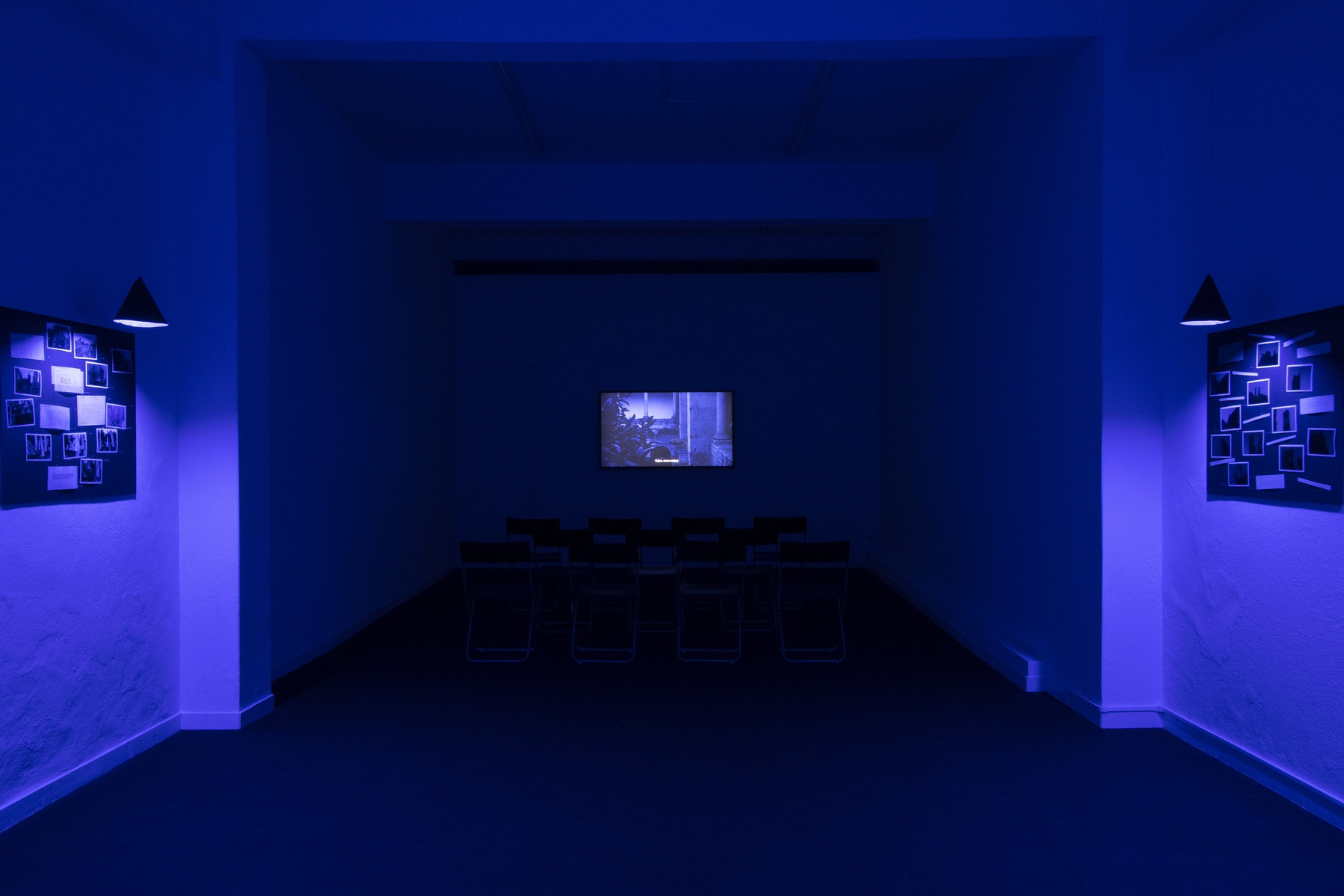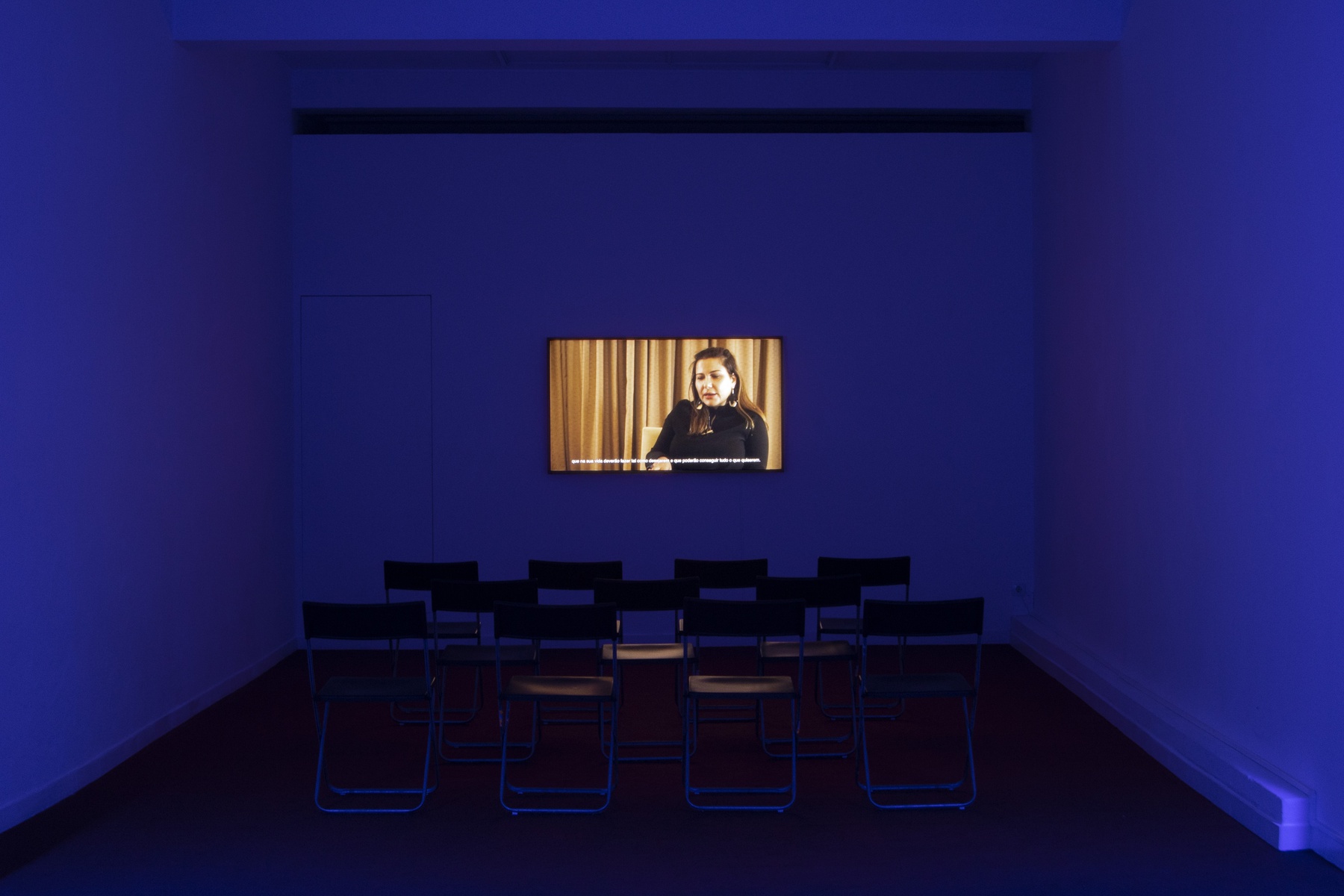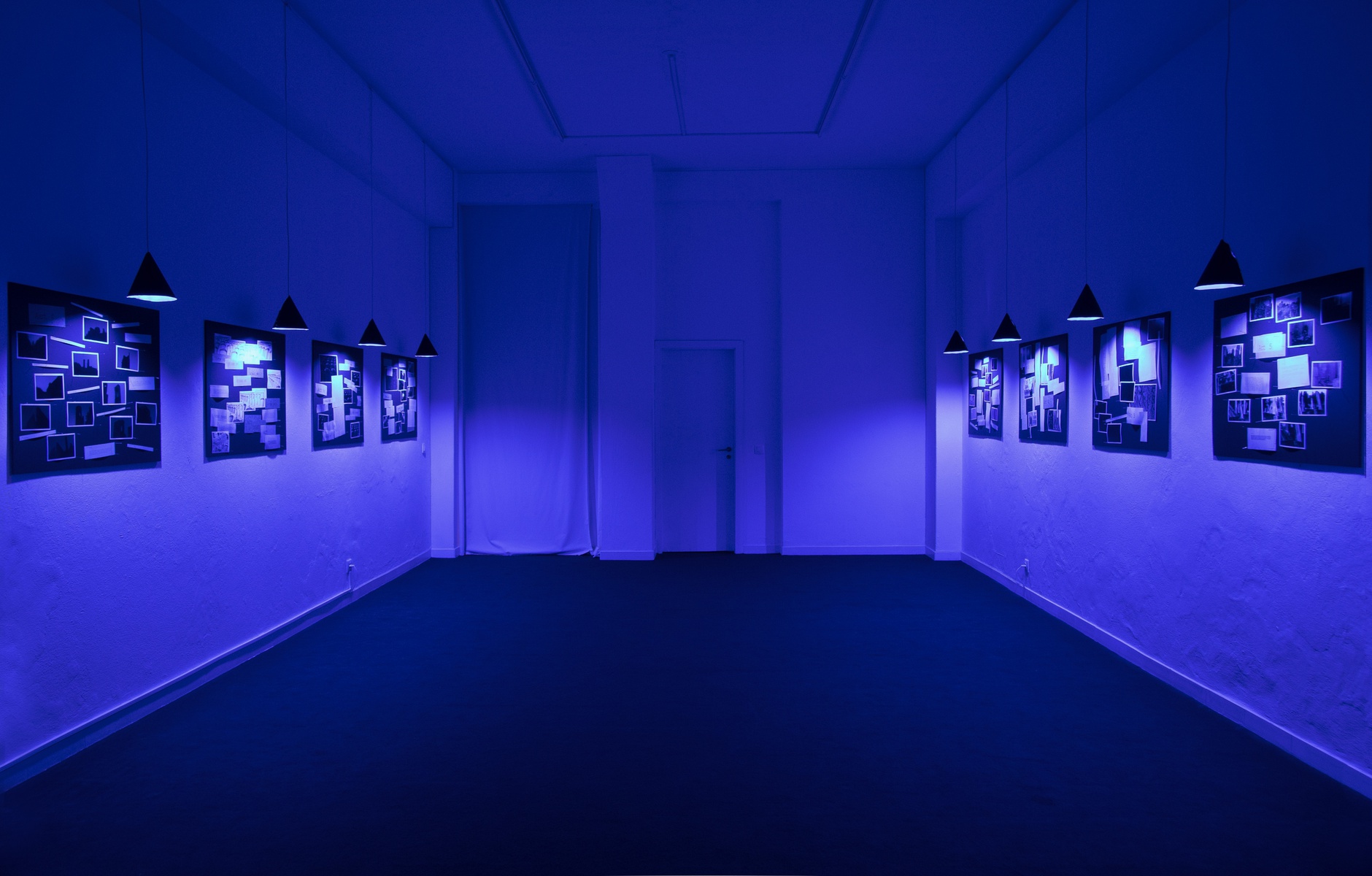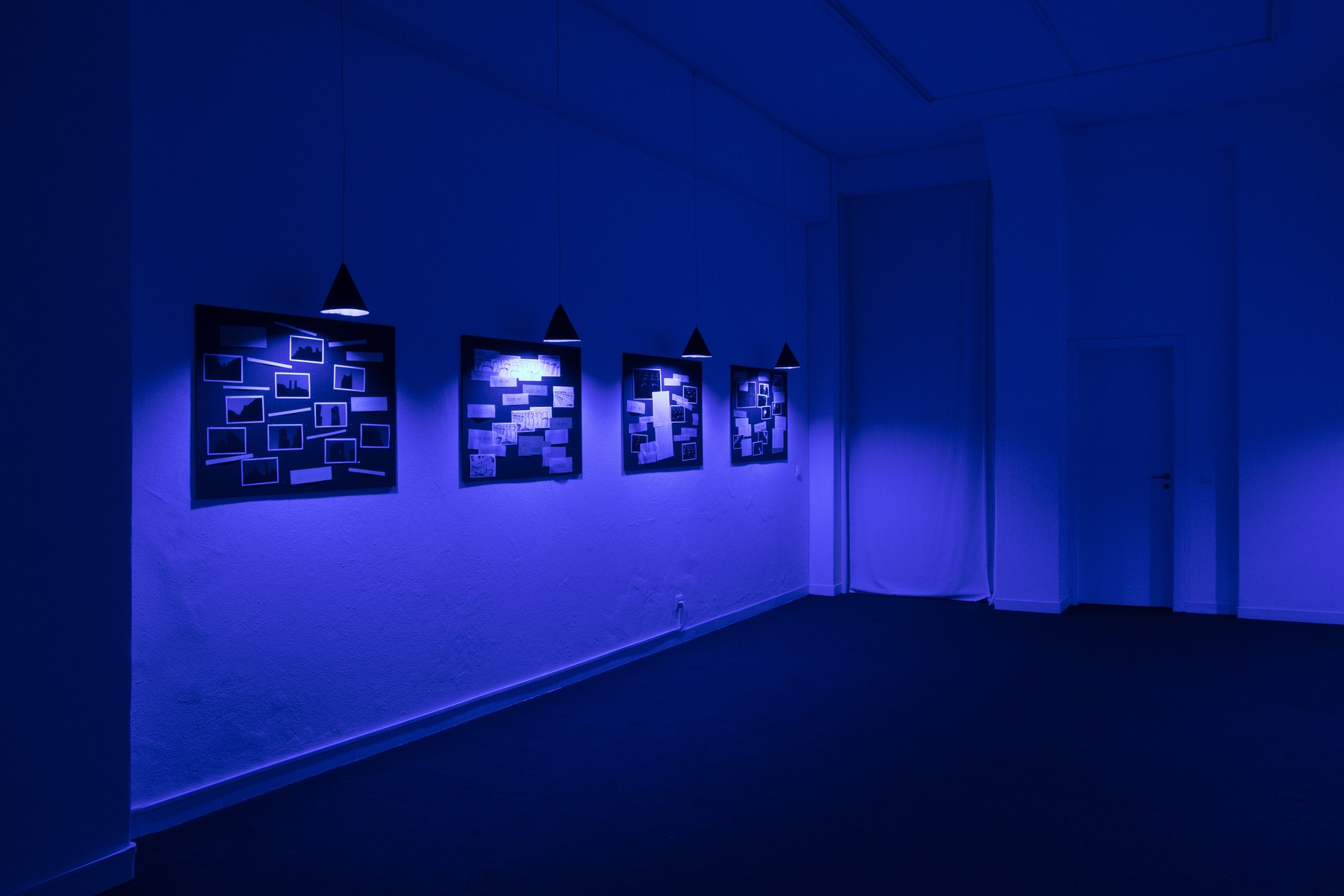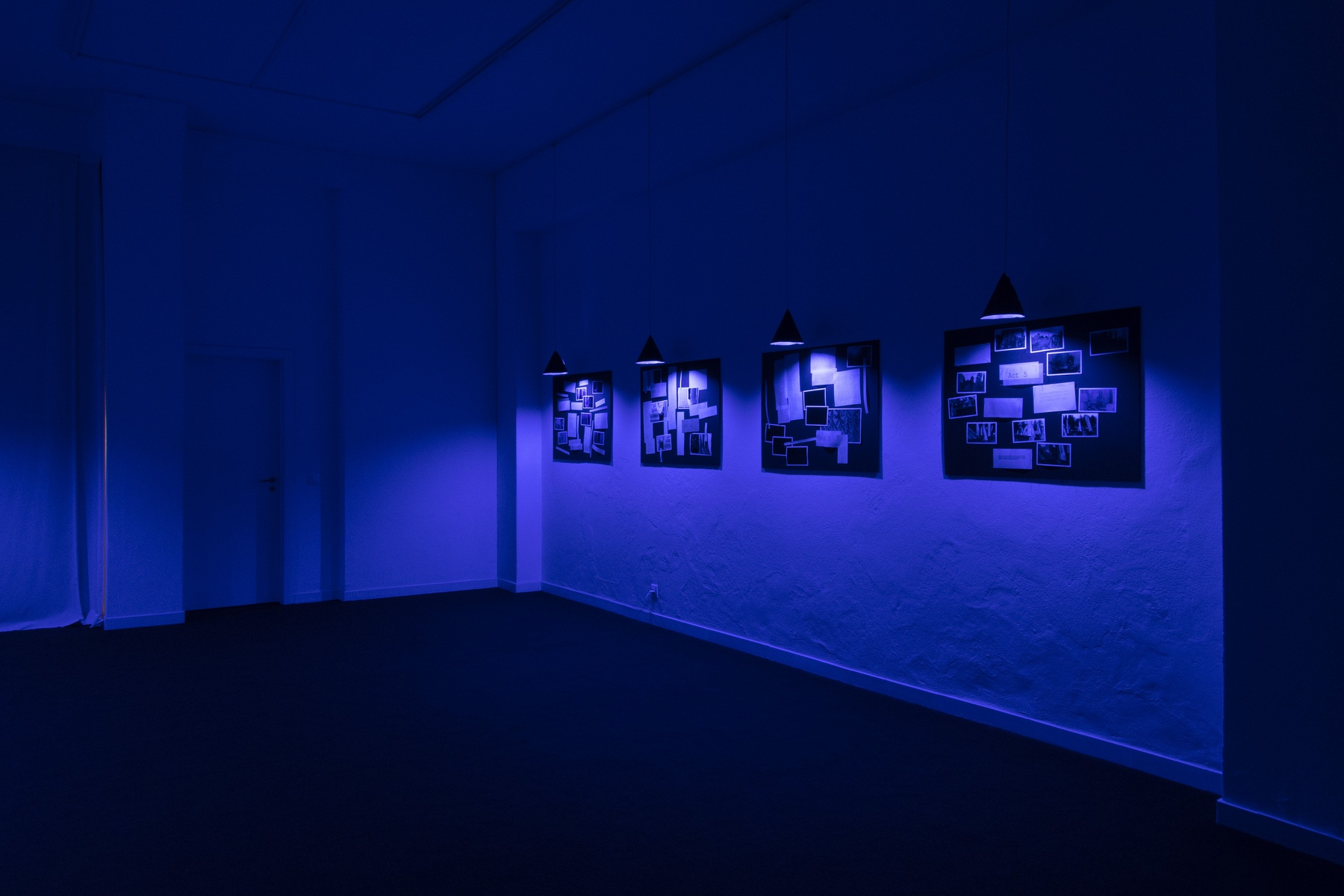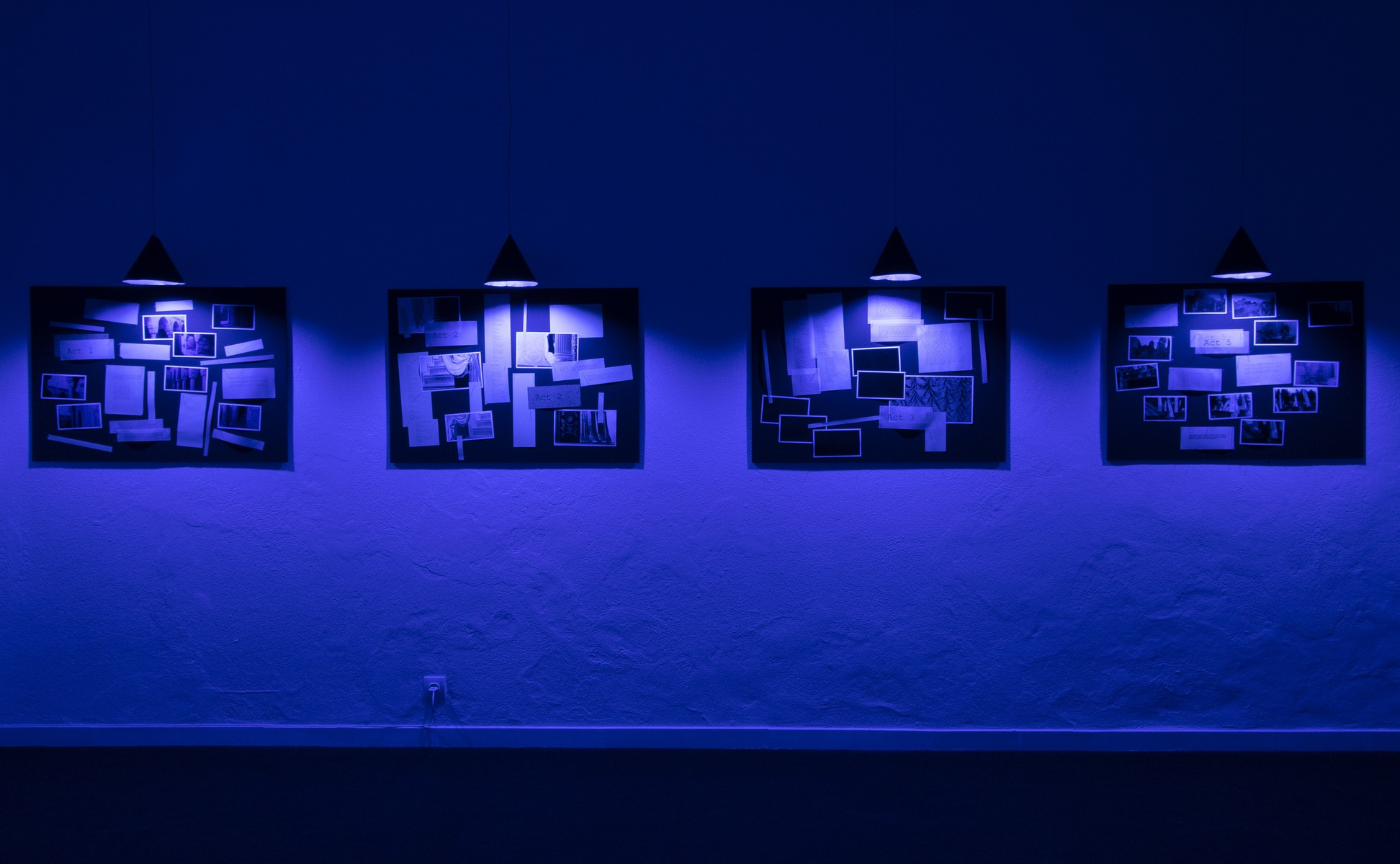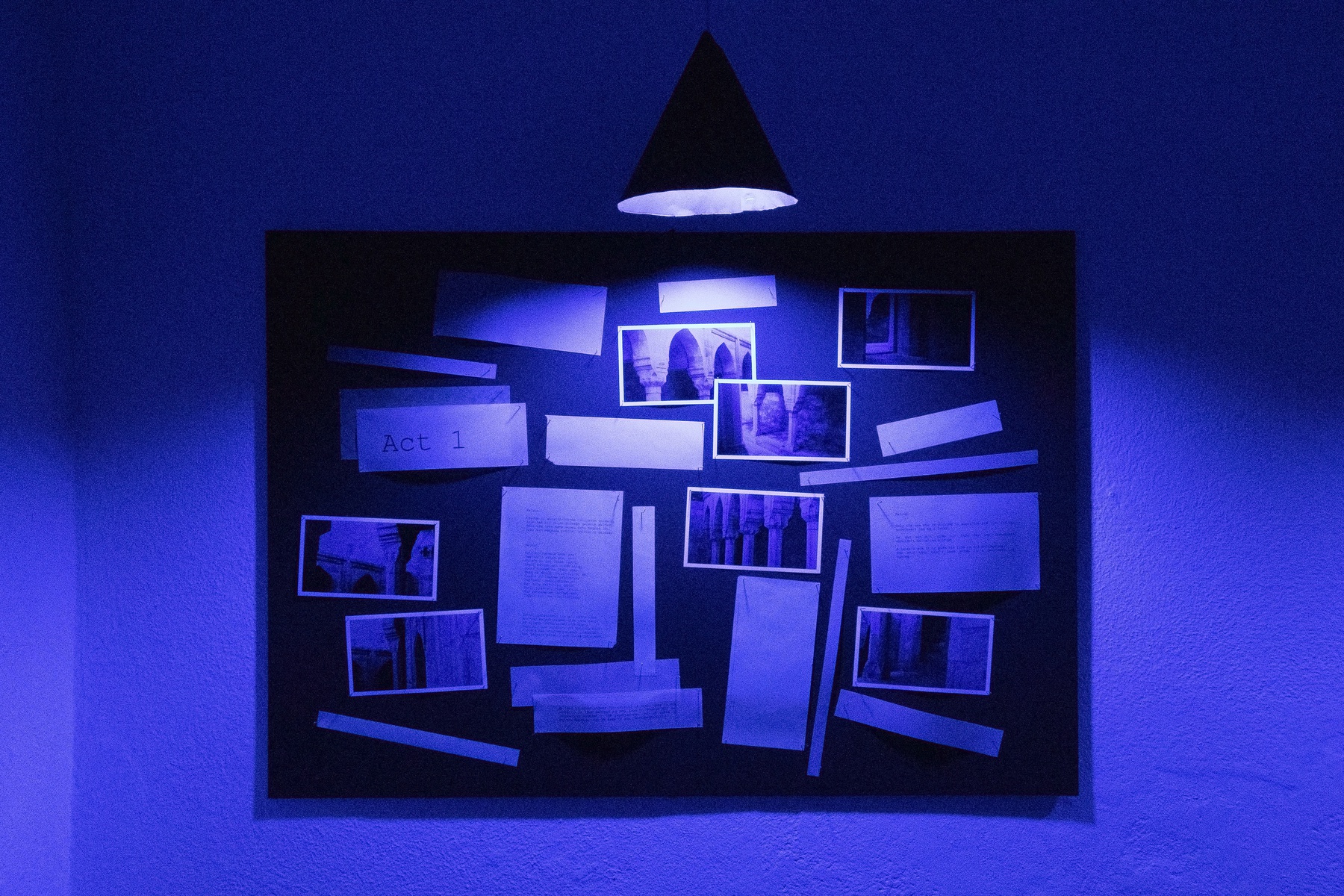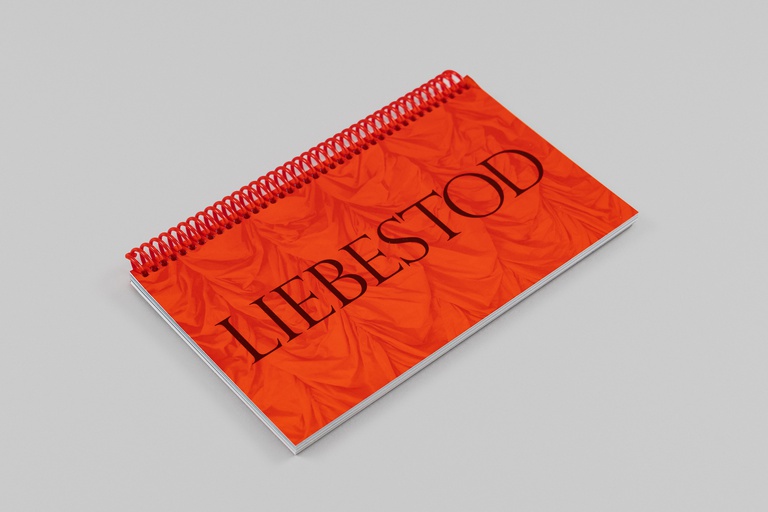Liebestod – Love and Death
Exhibition
15 Apr – 14 May 2021
Vasco Araújo’s Liebestod or the curse of romantic love in four acts
Why are we still the victims of the illusions and disillusions of romantic love? This is one of the questions raised by Vasco Araújo’s video and installation Liebestod. Shown for the first time in 2019 in Baku, Azerbaijan, this piece is a meta-operatic work. Two primordial legends of tragic love, preserved in the oral tradition and fixed by poets and troubadours many centuries ago, provided the title of two emblematic operas. Tristan and Isolde and Leyli and Majnun appear side by side in his film to demonstrate that despite the “civilizational clash” between the West and the Middle-East (viz. between Christianity and Islam), both constitute not only the avatars of the same archetype, but perhaps of the same model of the human psyche.
Vasco Araújo invited psychoanalysts from Azerbaijan and Germany to examine and compare the two operas at hand. They responded to the artist’s provocations about the definition of love, the projection of the beloved, the ensuing excess of idealization, the possible correlations between the plot of the two operas and the difficulties that mar contemporary relationships, as well as the psychological effects inherent to the clash between illusion and reality.
In line with the opera Leyli and Majnun, Liebestod has a four-act structure. Like cinema montage, the video embodies a syntax of juxtapositions. A third element, a “new concept” (cf. Eisenstein 1957, 4) is created as a strategy to intensify the experience of acting by combining the fragments of two homologous operas. To this are added the intertitles which, in the tradition of silent cinema, provide a critical dialogue which addresses (and provokes) the spectator. On top of this appear the psychoanalysts’ responses to the artist’s challenge. This sequence, this confrontation between homologous elements (operas) and heterogenous elements (original texts, operatic interpretations, critical questionings, analytical comments) generates a dense layer of different angles and readings and simultaneously opens up a field for us to relate to the operatic text in a way that is eminently immersive and personal.
The governing principle was not to reduce the figure of the enamoured to a known character, as if he was a mere symptomatic subject, but to bring out what is simultaneously topical and universal in his voice. Thence the use of this device that renounces the protocol of watching the singers perform on stage to embody instead the unique action of a first language, a primordial language (without metalanguage). The representation of the lovers’ discourse is thus replaced with the isolated listening of the body that utters it, i.e., as a disembodied, bodyless voice, which offers various transferences through an infinite process of permutations and transversalities. Thereby, the artist returns this discourse to its fundamental person: the self of the spectator. The identification is not psychological; it is a purely structural operation: “I am the one who has the same place I have”, Roland Barthes says (2001, 129). Without the dramatic poses, the languid gestures and the theatrically profound gazes; without the excessive and extravagant costumes; without the silk, the delicate velvet, the frills, the gloves and the cleavages which we contrivedly attribute to a given era, that movement allows for a condition (and power) of the word to be known in its timeless, trans-historical dimension. That is: it promotes that which drama theory specialists call “identification”. The subject painfully identifies himself with some person (or character) who occupies the same position as himself in the amorous structure (cf. Barthes 2001, 129). Thrown at us in bursts, these words are outside (the bodies and) the narrative; they stir, despair, lament, unite and separate as disorderly as a sudden plunge into the rough swell of the ocean. Caught in the webs of the plot, we are dragged in its current in a feverish movement.
This underlines that fact that the most profound aspect of myth is the power it exerts on us, in a generally involuntary manner. “It operates wherever passion is dreamed as an ideal instead of being feared like a malignant fever […] or imagined as a magnificent and desirable disaster” (Rougemont 1983, 24). Blinded by “verbal hallucination”, we become entangled in that sort of versicle, refrain, litany; but that mother-phrase – to die for love – echoes in the chambers of a well-known encyclopaedia of immensely codified affective culture that stubbornly persists in the social conventions, the tales and images that structure our everyday fantasies and experiences, mirroring a common reality of human existence that is deeply contemporary.
Stories like Tristan and Isolde (the matrix model for its successors) teach us nothing more than the quest for and ideal of perfection that can never be embodied in a person, and which condemns us to the constantly repeated vicious cycle of thwarted expectations, bitterness and disappointment. For this reason, anxiety mounts throughout the play as we witness its progression; we hear it rise, like an inexorable figure against the backdrop of death, which thickens in the castle’s ruins, in the nocturnal forest and in the graveyard’s stone.
By exploring a pathetics of juxtapositions, obliterating the characters’ bodies, introducing clinical commentary and providing a storyboard on panels mounted on the walls of the same room where the film is screened, Vasco Araújo unravels the foundational artifice of dramatic rhetoric. As an exercise in deconstruction, the artist exposes the codes, fallacies and contradictions inherent in the narrative and staging of the operatic spectacle, while in turn the spectators offer him the innocence of their imaginary, so that their consciousness may be warned against the traps that pertain to the mythology of romantic love.
Bruno Marques
Vasco Araújo was born in 1975 in Lisbon. Completed his first degree in Sculpture in 1999 at FBAUL, and attended the Advanced Course in Visual Arts at Maumaus in Lisbon. Araújo also took part in residency programmes such as The University of Arts, Philadelphia (2007); Récollets, Paris (2005); and the Core Program (2003/04), Houston. In 2003, he was awarded the EDP Prize for New Artists, Portugal. Since then, he has participated in various solo and group exhibitions both in Portugal and abroad: “Momento à parte”, MAAT – Fundação EDP, Lisboa, Portugal (2019); “Vasco Araújo”, M-Museum, Leuven, Belgica, (2018); “Decolonial desires”, Autograph ABP, Londres, U.K. (2016); “Potestad”, MALBA – Museu de Arte Latino-Americana de Buenos Aires, Buenos Aires, Argentina.(2015) “Under the Influence of Psyche”, The Power Plant, Toronto (2014); “Debret”, Pinacoteca do Estado de S. Paulo, S. Paulo (2013); “Em Vivo Contacto”, 28º Bienal de S. Paulo, São Paulo (2008); “Experience of Art”, La Biennale di Venezia. 51st International Exhibition of Art, Venice; “The World Maybe Fantastic” Sydney Biennial (2002), Sydney. His work has been published in various books and catalogues and is represented in several public and private collections.
Exhibition
15 Apr – 14 May 2021

